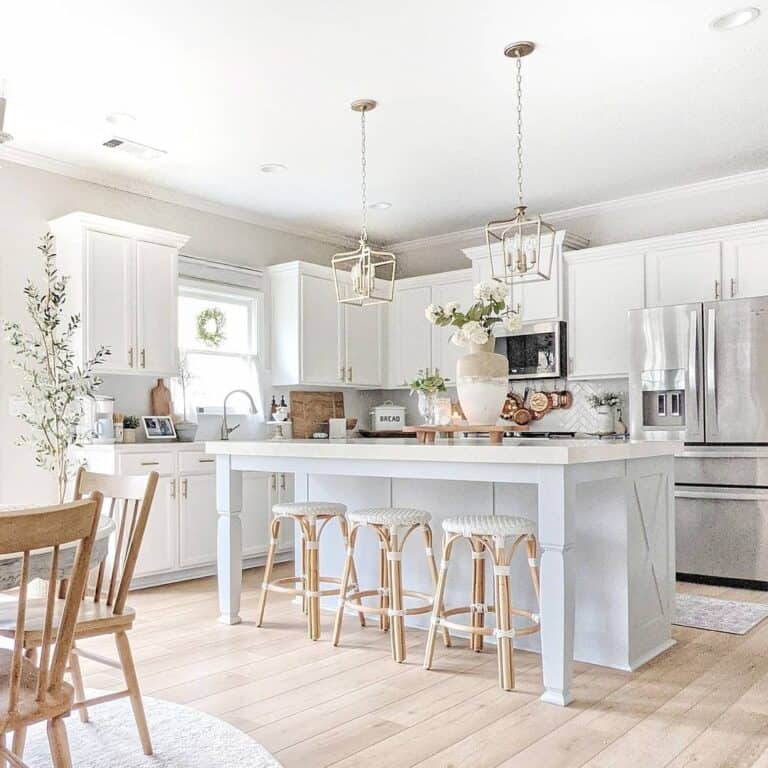Explore Timeless Options in Classic Legs For Kitchen Island Styles
Wiki Article
Crucial Variables to Take Into Consideration When Picking Legs For Kitchen Area Island
Picking the suitable legs for a cooking area island involves a mindful assessment of numerous factors that can dramatically influence both capability and aesthetic charm. As we discover these aspects, it comes to be clear that each decision can have far-ranging ramifications for the general kitchen experience.Product Options
When choosing legs for a kitchen area island, comprehending the different product options is crucial for accomplishing both visual appeal and structural honesty (Legs For Kitchen Island). The choice of material substantially affects not only the toughness of the island but also its general layout and functionalitySteel legs, commonly made from stainless steel or functioned iron, add a contemporary and commercial feel while guaranteeing sturdiness and stability. These materials are resistant to wear and can sustain significant weight, making them excellent for bigger islands.
An additional choice is engineered materials, like MDF or plywood, which can be more cost-effective while still offering a variety of coatings. They might not supply the same level of security as solid wood or steel. Legs For Kitchen Island. Finally, materials such as acrylic or glass can create a modern appearance, though they may call for added support to ensure security.
Ultimately, the option of material for cooking area island legs must align with the wanted performance and the overall motif of the kitchen area.
Design and Style

When considering style, the shape and surface of the legs are important. Conical legs can give a feeling of agility and elegance, while thicker, more durable legs can convey strength and security. In addition, the coating-- be it repainted, tarnished, or all-natural-- need to enhance the kitchen cabinetry and kitchen counter products to develop a unified appearance.
Additionally, the style of the legs can likewise show personal taste. Custom or attractive legs, such as those including complex makings or special geometric shapes, can serve as focal points, including personality and character to the kitchen. Ultimately, the right selection will certainly not only enhance capability yet likewise elevate the visual allure, making the kitchen area island a standout feature of the home.
Elevation Factors To Consider
Selecting the appropriate elevation for kitchen island legs is vital, as it directly affects both capability and comfort. The typical height for a cooking area island generally varies from 36 to 42 inches, aligning with typical kitchen counter heights.
It is likewise necessary to account for customers' heights and preferences. Customizing the elevation can make sure a comfortable experience for all member of the family, making the kitchen island an extra useful and pleasurable space.
Weight Assistance
Guaranteeing adequate weight assistance for kitchen island legs is essential for both security and functionality. The kitchen area island frequently offers multiple objectives, including food prep work, dining, and added storage, demanding a robust assistance framework. When choosing legs, it is crucial to think about the total weight capacity called for based on the island's meant usage and the materials that will certainly be positioned on it.The option of product for the legs plays a considerable duty in their weight-bearing capabilities. Solid timber, metal, and durable compounds generally supply superior stamina contrasted to lighter products. Additionally, the style of the legs-- whether they are right, tapered, or have a pedestal form-- can influence their capability to disperse weight effectively across the framework.
Constantly consult the supplier's specifications concerning tons limitations to make sure that the legs can sustain the designated weight without compromising safety. In summary, selecting cooking area island legs with sufficient weight support is vital for developing a risk-free and useful culinary space.
Installment and Upkeep
Correct setup and upkeep of kitchen area island legs are crucial for ensuring durability and stability. This commonly involves safeguarding the legs Website to the island base utilizing ideal fasteners, ensuring that the legs are level and straightened.When mounted, routine upkeep is required to maintain the integrity and look of the legs - Legs For Kitchen Island. For wood legs, regular cleansing with a damp fabric and application of ideal wood gloss can prevent wetness damages and maintain their surface. Steel legs may need a mild cleaning option to get rid of grease and gunk, adhered to by a dry fabric to protect against rust formation
Furthermore, evaluate the legs routinely for indications of wear or damage, such as fractures or loosened joints. Tightening up screws or screws as required can additionally prolong the lifespan of the legs. By adhering to these installation and maintenance methods, view it house owners can make sure that their cooking area island continues to be tough and aesthetically appealing for several years ahead.
Verdict

Aesthetic coherence is extremely important in choosing the design and layout of legs for a kitchen island, as these aspects considerably affect the overall ambiance of the area. Conical legs can give a feeling of lightness and beauty, while thicker, a lot more durable legs can share toughness and security.Choosing the appropriate height for kitchen area island legs is vital, as it straight influences both capability and convenience. In recap, selecting kitchen island legs with adequate weight check support is important for producing a practical and risk-free cooking area.
In final thought, choosing legs for a kitchen area island requires cautious consideration of various elements, including material alternatives, design, elevation, weight assistance, and setup.
Report this wiki page